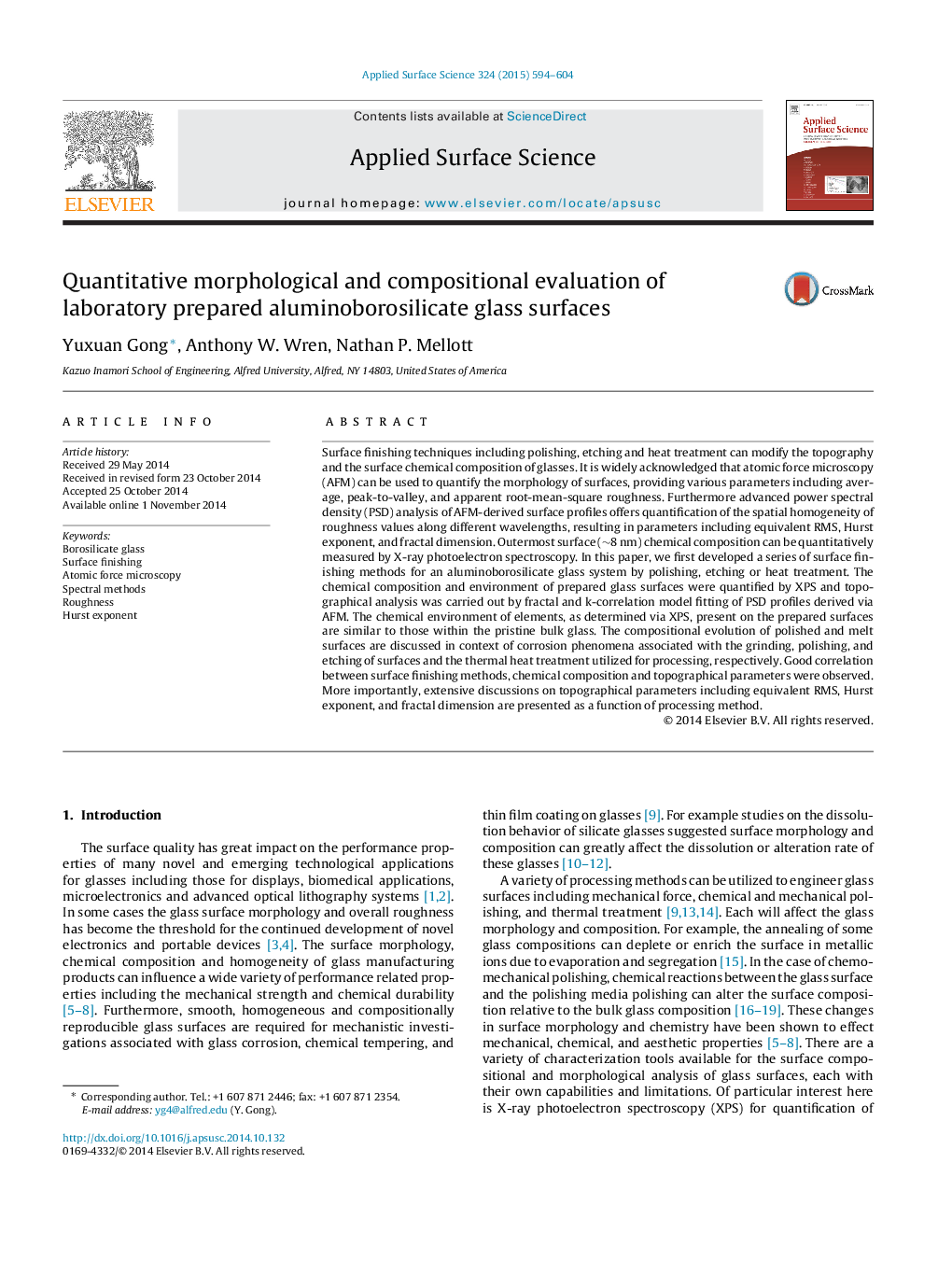| Article ID | Journal | Published Year | Pages | File Type |
|---|---|---|---|---|
| 5349070 | Applied Surface Science | 2015 | 11 Pages |
Abstract
- Aluminoborosilicate glass surfaces were prepared through both melting and polishing/etching and the surface composition and morphology were quantified as a function of processing method.
- Glass surface morphology was quantified using PSD analysis, followed by both fractal and ABC model fitting, resulting in a comprehensive description of the spatial distribution of roughness.
- All melt surfaces showed a depletion in Na, Ca, and B with respect to the bulk composition. Polished/etched surfaces showed a depletion in Na, B, and Al with respect to the bulk composition.
- It was found that increasing heat treatment temperature of melt surfaces lead to a decrease in equivalent roughness and an increased spatial homogeneity of roughness while etching of polished ISG glass surfaces decreases the roughness and spatial distribution homogeneity of roughness.
Keywords
Related Topics
Physical Sciences and Engineering
Chemistry
Physical and Theoretical Chemistry
Authors
Yuxuan Gong, Anthony W. Wren, Nathan P. Mellott,
